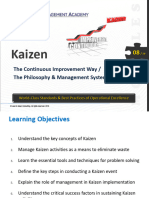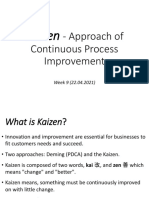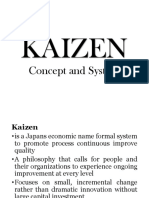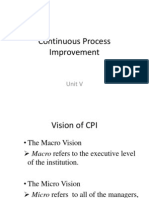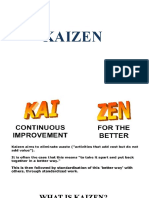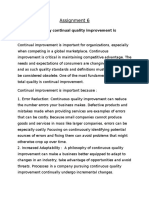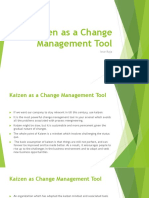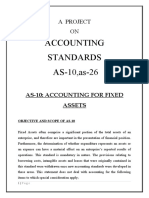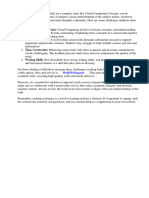0% found this document useful (0 votes)
31 views62 pagesKaizen 17 PDF Free
Kaizen, meaning 'Change for the Better', is a continuous improvement process that involves all levels of an organization to enhance efficiency and effectiveness. It emphasizes gradual, incremental changes rather than sudden innovations, aiming for long-term improvements in quality and customer satisfaction. The Kaizen system requires commitment from top management and empowers employees to take ownership of their work processes to achieve organizational goals.
Uploaded by
skminami26Copyright
© © All Rights Reserved
We take content rights seriously. If you suspect this is your content, claim it here.
Available Formats
Download as PDF, TXT or read online on Scribd
0% found this document useful (0 votes)
31 views62 pagesKaizen 17 PDF Free
Kaizen, meaning 'Change for the Better', is a continuous improvement process that involves all levels of an organization to enhance efficiency and effectiveness. It emphasizes gradual, incremental changes rather than sudden innovations, aiming for long-term improvements in quality and customer satisfaction. The Kaizen system requires commitment from top management and empowers employees to take ownership of their work processes to achieve organizational goals.
Uploaded by
skminami26Copyright
© © All Rights Reserved
We take content rights seriously. If you suspect this is your content, claim it here.
Available Formats
Download as PDF, TXT or read online on Scribd
/ 62






